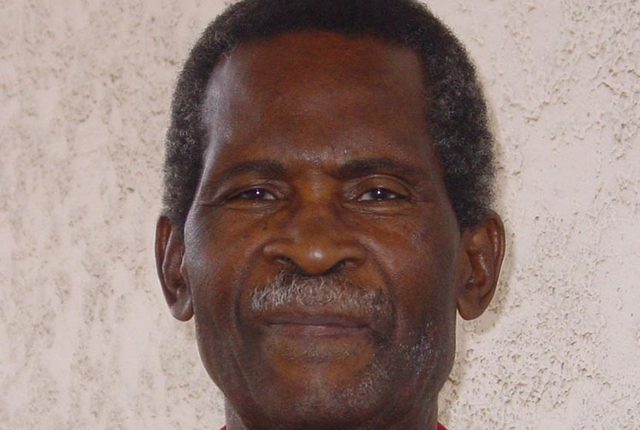Floods damage infrastructure in southern Zimbabwe


The damaged bridge over Nkankezi River in Filabusi
Jeffrey Gogo Climate Change
WHEN it rains, it pours. And at a time of drought, it scorches. As, climate-linked extreme events now appear to have become the norm than the abnormal, Zimbabwe has in recent decades staggered from one natural disaster to the next, sometimes in back to back farming seasons.
From a drought forced on by El Nino last summer, that cut harvests of the maize staple by more than 60 percent, leaving 4 million people facing hunger, the country has this year received more rain than is needed, causing severe flooding with over 240 fatalities and massive property damage.
Some of the heaviest rain fell in Masvingo province, with over 220mm of rain pounding in just 24 hours — the equivalent of a year’s rain in some areas within this predominantly semi-arid region. It is a load too heavy to carry for the impoverished villagers, livestock, and both public and private property.
Now, Local Government and Public Works Minister Mr Saviour Kasukuwere says more than half a billion dollars is needed to repair damaged infrastructure and restore livelihoods after heavy rain since December left 100 000 people across Zimbabwe devastated.
These numbers are just rough estimates, he said. The true financial cost is unknown, yet. But the floods have killed hundreds within months, scattering scores of families rendered homeless into makeshift camps, short on food, medicine and clothes.
“(At the moment) I would be lying (to say we know the actual amount of money needed to rehabilitate damaged infrastructure),” Mr Kasukuwere, who also chairs a Cabinet Committee on disaster management, told The Herald Business on Thursday, by telephone.
“But disasters of this magnitude could easily run over $500 million. It’s a lot of money. We are talking here about the road infrastructure, which has been destroyed across all the country’s provinces; we are talking about dams and hospitals we have lost, not to mention the precious human lives lost.”
Earlier that day Mr Kasukuwere had put a declaration by Government of the flooding as a State of Disaster into action, opening doors to external aid.
He briefed diplomats, aid agencies, the private sector and citizens on the extent of damage, appealing for food, medicines and money, to help affected families rebuild their homes and pick up what’s left of their livelihoods.
And as school classes have been disrupted, bridges rendered impassable and road damage equivalent to $100 million’s worth occasioned across Zimbabwe, mostly in the central and southern regions, Mr Kasukuwere has promised Government will build a better future for everyone, a climate-proof future.
“The thrust of Government is to go beyond emergency response to building back better in the post-disaster recovery period,” he told a Press conference, little daunted about the scale of the cost of rebuilding.
Abnormal situation
Bandied around as an ordinary everyday phrase, yet oblique to many, what exactly does it mean for a situation to be declared a state of disaster, in this case, as far as response to the current deluge is concerned?
“What it means is that we (Government) have to mobilise resources, to commandeer resources to deal with the (particular) emergency,” explained the Public Works Minister, Mr Kasukuwere.
“It (state of disaster) an acknowledgement by a country that we have an abnormal situation, which will now require extra-ordinary measures to overcome and restore normalcy.”
Effectively, a declaration of national disaster commits central Government to releasing aid in affected areas, as well as opening doors for foreign assistance.
“We have invited international partners, local donors to come and play their part, to come and help rehabilitate and restore critical services,” he said.
Climate change is turning things on their head, causing deep changes to the way people live, eat and farm, and as already seen in recent decades, precipitated significant financial and asset losses, some of which remain unrepaired to this day, years after damage.
It’s biggest impact in Zimbabwe is on agriculture, a key economic sector that supports over two thirds of the 13 million population, the majority of them peasant farmers.
And the greatest weakness has been a lack of insurance cover by small farmers, for their crops, livestock and property. In the end, every extreme event that strikes tends to become a matter of life or death, as farmers are left clutching at straws, looking up for help from anyone who can offer it.
Whereas some of the damage from the floods could have been covered by insurance, particularly farm produce, there is no telling how many of the affected families have similar cover.
It is a nationwide crisis. To put things into perspective, crop insurance accounted for just 5 percent of the $120 million premiums grossed by the insurance sector in 2015. This is happening in a country where its single largest foreign currency earner is from agriculture — tobacco.
Now, with the Meteorological Services Department and the Civil Protection Unit continuing with their flood warnings, there appears to be more severe weather incidents that require communities to access Government support now and in years to come.
A disaster recovery fund that helps affected communities receive some financial assistance post-disaster is not a far fetched idea, especially in view of the scale of insurance-apathy by small farmers, who in fairness, might be too poor to afford insurance cover.
“Landslide alert for Bikita and other areas: Beware of landslides if your home is in a mountainous area. In case of emergency dial 112,” the CPU warns in a text message, blasted by SMS to cellular phone users.
God is faithful.











Comments